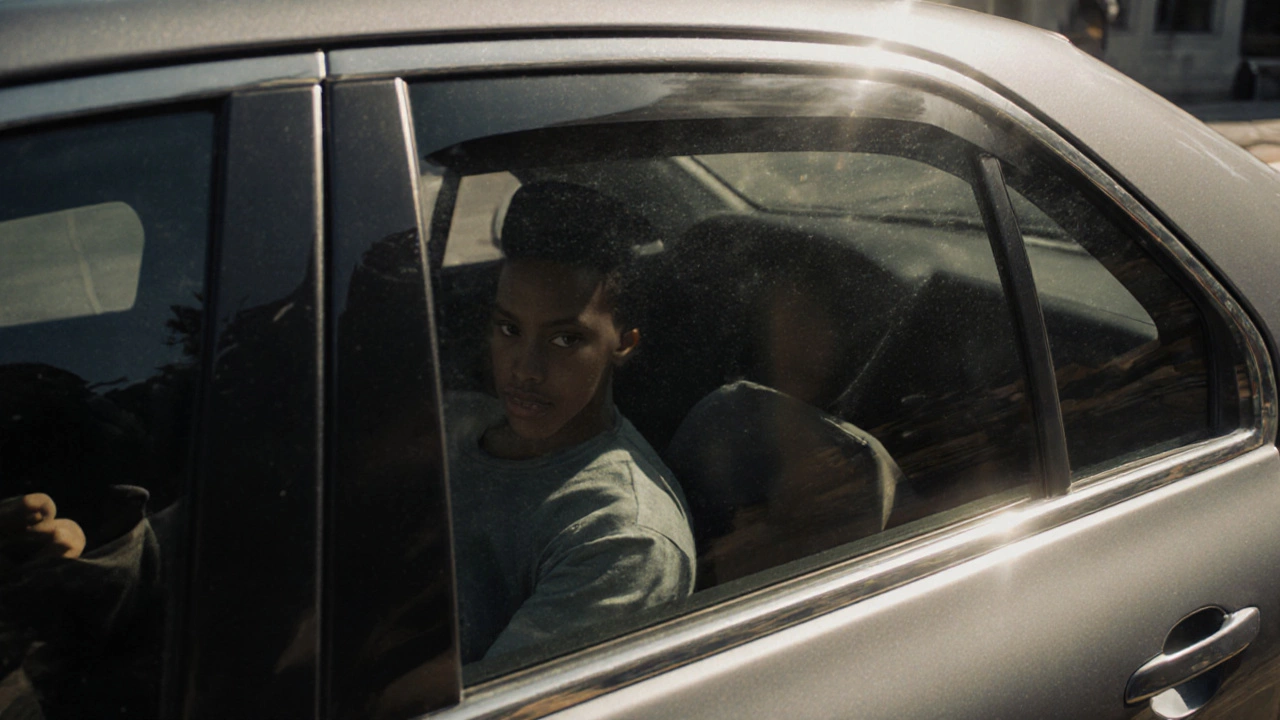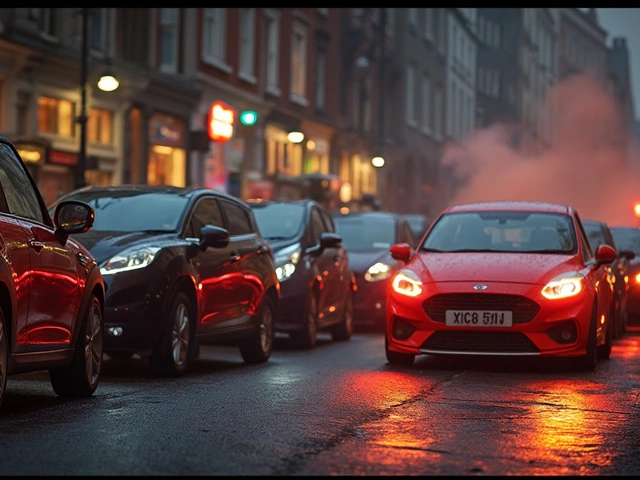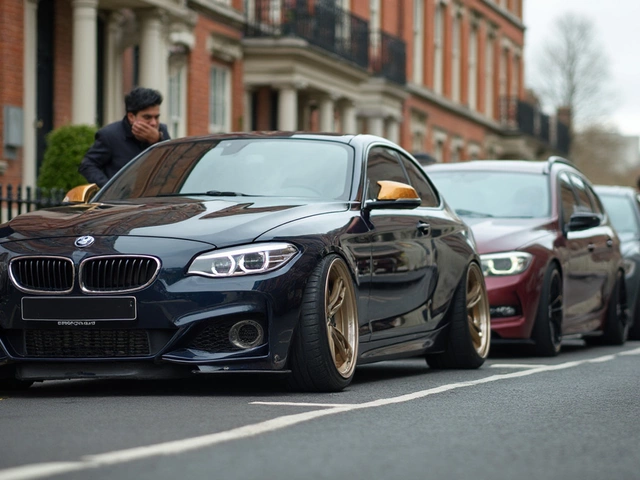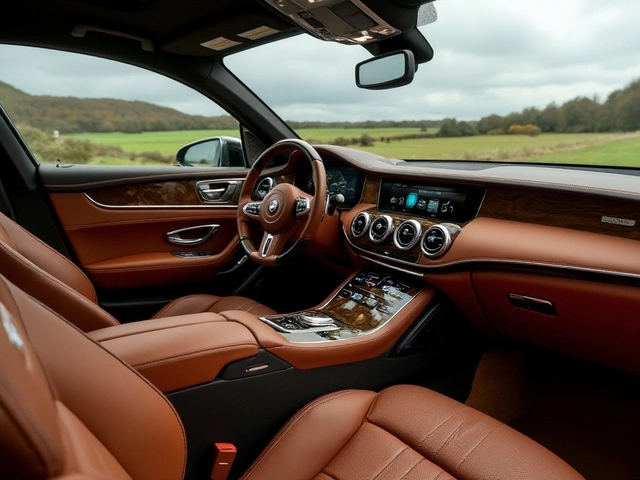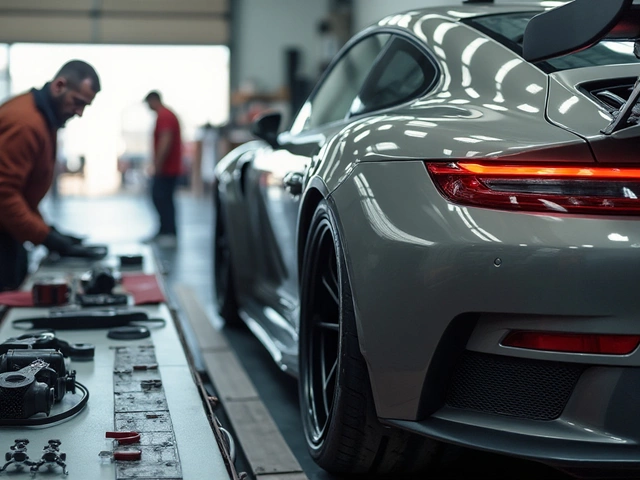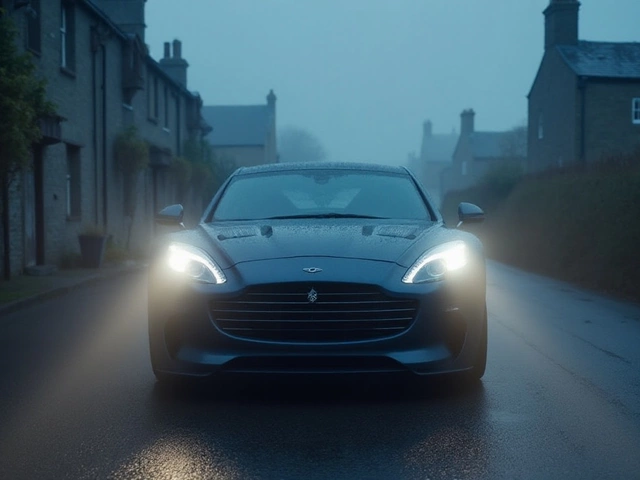Tint Visibility Calculator
See How Visible You Are Through 35% Tint
Adjust the sliders below to see how visible you'd be through different window tint levels in various conditions.
Visibility Result
Adjust settings to see your result
Your visibility result will appear here.
Ever look at a car with 35% tint and wonder if you could see inside? Maybe you’re thinking about getting it on your own ride, or you’re just curious after seeing one on the road. The short answer? Yes, people can see through 35% tint-but not like you’re staring through clear glass. It’s dark enough to block glare and keep heat out, but not so dark that you can’t make out shapes, faces, or movement from the outside.
What Does 35% Tint Actually Mean?
Window tint percentage refers to Visible Light Transmission (VLT)-how much light passes through the film. A 35% tint lets in 35% of visible light. That means 65% is blocked. It’s not the darkest option out there, but it’s one of the most popular for a reason. It’s a sweet spot between privacy and visibility.
Compare it to 5% tint-what people call "limo tint"-which is almost completely opaque from the outside. Or 70% tint, which barely changes how the window looks. Thirty-five percent sits right in the middle: noticeable, but not extreme.
Can You See Inside a Car With 35% Tint?
From the outside, during daylight, you can see the general shape of people inside. You’ll notice if someone’s sitting in the driver’s seat, if they’re wearing a hat, or if there’s a bag on the passenger seat. But you won’t see facial details unless you’re really close-like standing right next to the window at a traffic light.
At night, it’s different. When it’s dark outside and the car’s interior is lit, the tint becomes more transparent from the outside. That’s because light inside reflects out, making it easier to see in. So if you’ve got your dome light on or your phone glowing while driving at night, people outside can see you more clearly.
Most people who get 35% tint aren’t trying to hide from the world. They’re trying to reduce sun glare, keep the cabin cooler, and stop prying eyes from spotting their wallet or laptop on the seat. It works for that.
Is 35% Tint Legal?
Legality depends on where you are. In Australia, each state sets its own rules for window tinting. In Queensland, where I’m based, the front side windows must allow at least 35% VLT. That means 35% tint is the legal minimum for the driver and front passenger windows. You can go darker on the rear windows and back windshield, but not on the front.
Other states like New South Wales and Victoria also allow 35% on front windows. But in South Australia, the limit is 20% for front windows-so 35% is actually lighter than what’s allowed there. Always check your local laws before applying tint. Police can pull you over for illegal tint, and you might be forced to remove it or face a fine.
And don’t assume your factory tint counts. Most factory-tinted windows are around 70-80% VLT. The dark look you see on new cars? That’s usually a colored glass layer, not film. Adding aftermarket tint on top pushes the total VLT lower. If you’re not sure, get it tested with a professional VLT meter.
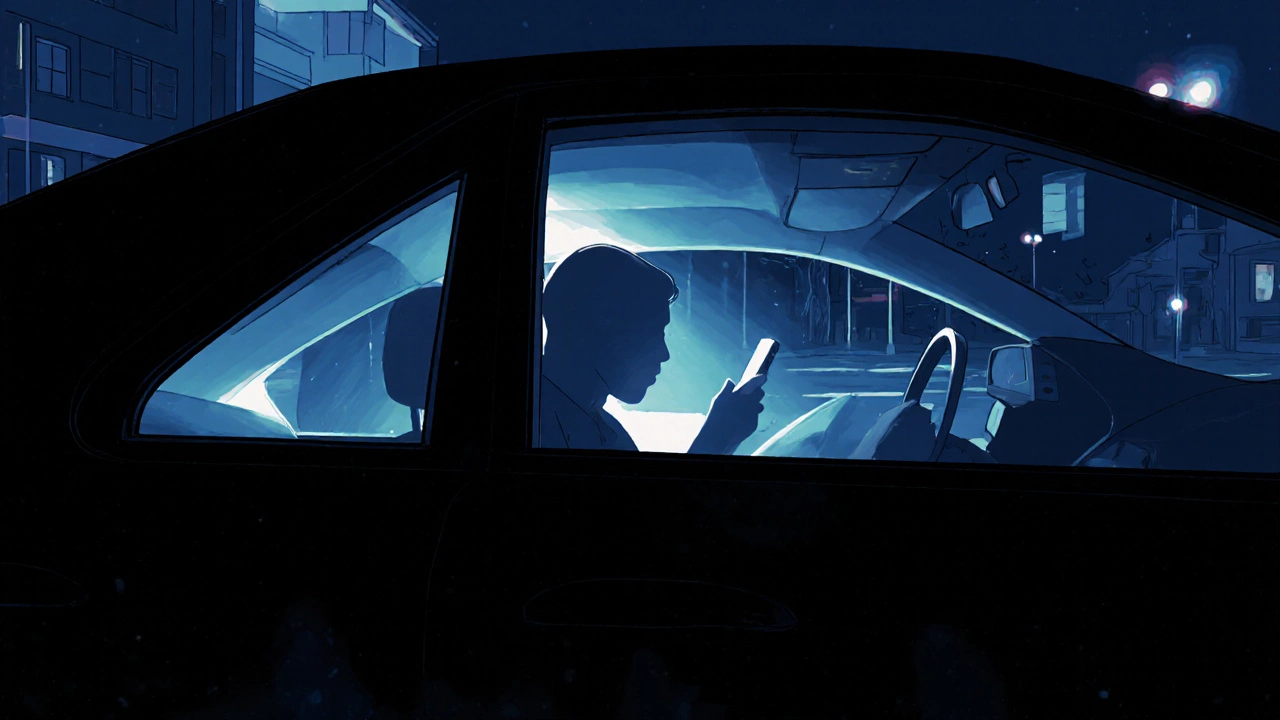
How Does 35% Tint Compare to Other Percentages?
Here’s a quick breakdown of how different tint levels affect visibility and privacy:
| VLT Percentage | Visibility From Outside (Day) | Privacy Level | Common Use |
|---|---|---|---|
| 70% | Very clear-almost no difference | Low | Factory tint, minimal heat reduction |
| 50% | Clear, slight darkening | Low to medium | Light glare reduction |
| 35% | Noticeable darkening-shapes visible, details blurred | Medium | Popular for front windows, balanced privacy and safety |
| 20% | Hard to see inside-only silhouettes | High | Rear windows, some states allow on front |
| 5% | Almost impossible to see inside | Very high | Limo tint, illegal on front windows in most places |
Thirty-five percent is the go-to for drivers who want privacy without sacrificing safety. You still need to be able to see clearly while driving, and you need to know that emergency responders or police can see inside if needed. That’s why many jurisdictions cap front window tint at 35%-it’s the darkest you can go without compromising safety.
Does Tint Quality Matter?
Not all 35% tint is the same. A cheap, dyed film might fade, bubble, or turn purple after a year. A high-quality ceramic or carbon film will last longer, block more heat, and keep its color.
Heat rejection is a big deal. A good 35% ceramic tint can block up to 60% of infrared heat and 99% of UV rays. That means your dashboard won’t crack as fast, your seats won’t get scorching hot, and your AC won’t have to work as hard. Cheaper films might only block 30% of heat.
Also, look for warranties. Reputable installers offer 5-10 year warranties on their film. If your tint starts peeling or fading after a year, you should be able to get it replaced free of charge.
What About Night Driving?
Some people worry that 35% tint will make night driving dangerous. The truth? It doesn’t. Most drivers report no issue with visibility at night. Your eyes adjust, and the road lights, streetlights, and headlights still come through clearly.
What you do need to avoid is pairing 35% tint with dirty or scratched windows. Smudges, dust, and scratches scatter light and make visibility worse-tint or no tint. Keep your windows clean. And if you’re still nervous, test it out. Drive at night with a friend sitting in the passenger seat. Ask them if they can see your face clearly. If they can’t, your tint might be too dark or poorly installed.
Who Should Get 35% Tint?
35% tint is ideal for:
- Drivers who want to reduce sun glare without going too dark
- People who live in hot climates like Brisbane, where summer heat is intense
- Those who want to protect their car’s interior from fading
- Anyone who needs to stay within legal limits for front windows
- Owners who still want some privacy but don’t need to hide from the world
If you’re looking for maximum privacy-like hiding valuables or avoiding attention-35% won’t cut it. You’d need 20% or lower, but that’s often illegal on front windows. If you’re worried about safety, 35% is the safest dark tint you can legally use.
What If You Want More Privacy?
If 35% feels too light, you can go darker on the rear windows. Most people do this. Keep the front windows at 35% for legality and safety, then drop to 20% or even 15% on the back. That way, you get the benefits of privacy without breaking the law.
Another trick? Use a sunshade. A foldable sunshade on the windshield when parked adds extra protection from UV rays and heat. It’s not a substitute for tint, but it helps when you’re sitting in the car during lunch breaks or waiting for someone.
Final Thoughts
35% tint is one of the most practical choices you can make for your car. It’s legal in most places, effective at blocking heat and glare, and still lets people see inside when needed-whether it’s for safety, law enforcement, or just curiosity. It’s not invisible, but it’s not a wall either. It’s a balance.
If you’re thinking about getting it done, go with a reputable installer. Don’t chase the cheapest price. Ask to see samples. Ask about the film brand. Ask about the warranty. And always get it tested with a VLT meter after installation to make sure you’re legal.
And if you’re ever curious whether you can see through someone else’s 35% tint? Walk up to their car during the day. Look through the window. You’ll see shapes. You’ll see movement. You might even see them looking back.
Can you see through 35% tint at night?
Yes, you can see through 35% tint at night, especially if the car’s interior lights are on. The tint blocks daylight effectively, but at night, light from inside reflects outward, making it easier to see into the vehicle. This is why it’s important to avoid leaving bright lights on when parked.
Is 35% tint legal in Australia?
In most Australian states, including Queensland, New South Wales, and Victoria, 35% tint is the legal minimum for front side windows. Rear windows often allow darker tint. Always check your state’s specific laws-some states allow darker tint on front windows, while others are stricter.
Does 35% tint reduce heat?
Yes, a high-quality 35% ceramic or carbon tint can block up to 60% of infrared heat and 99% of UV rays. This keeps your car cooler, protects your dashboard and seats from fading, and reduces the load on your air conditioning. Cheaper films offer less heat rejection.
Can police see inside a car with 35% tint?
Yes, police can see inside a car with 35% tint during daylight. They don’t need to get close to tell if someone’s inside or what’s on the seat. If they have reasonable suspicion, they can legally ask you to roll down your window. 35% tint is designed to balance privacy with visibility for safety and law enforcement purposes.
What’s the difference between factory tint and aftermarket tint?
Factory tint is colored glass, not film. It usually has a VLT of 70-80%, so it doesn’t block much heat or UV. Aftermarket tint is a film applied to the inside of the glass. It can be customized for heat rejection, UV protection, and darkness. Aftermarket tint offers far better performance and durability.

